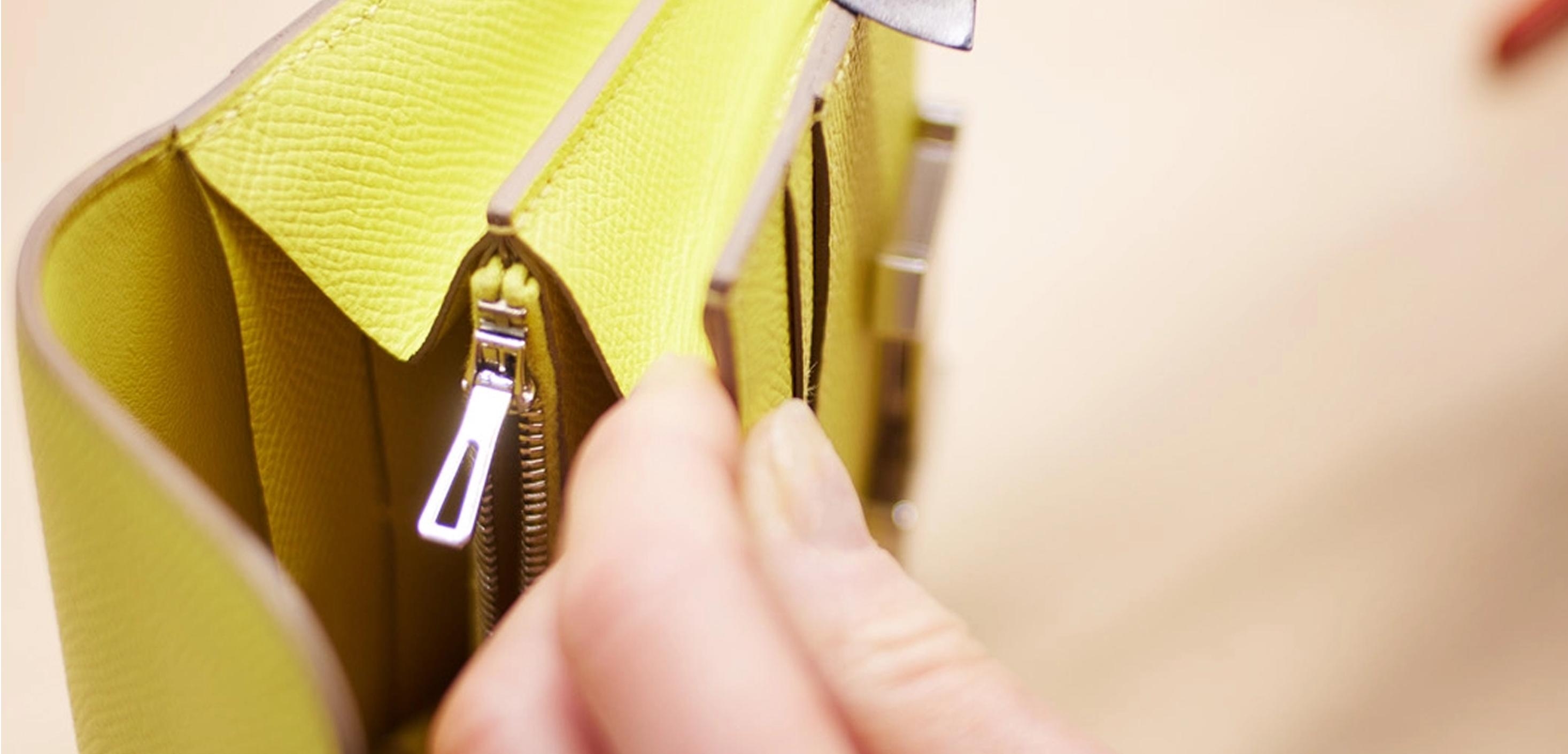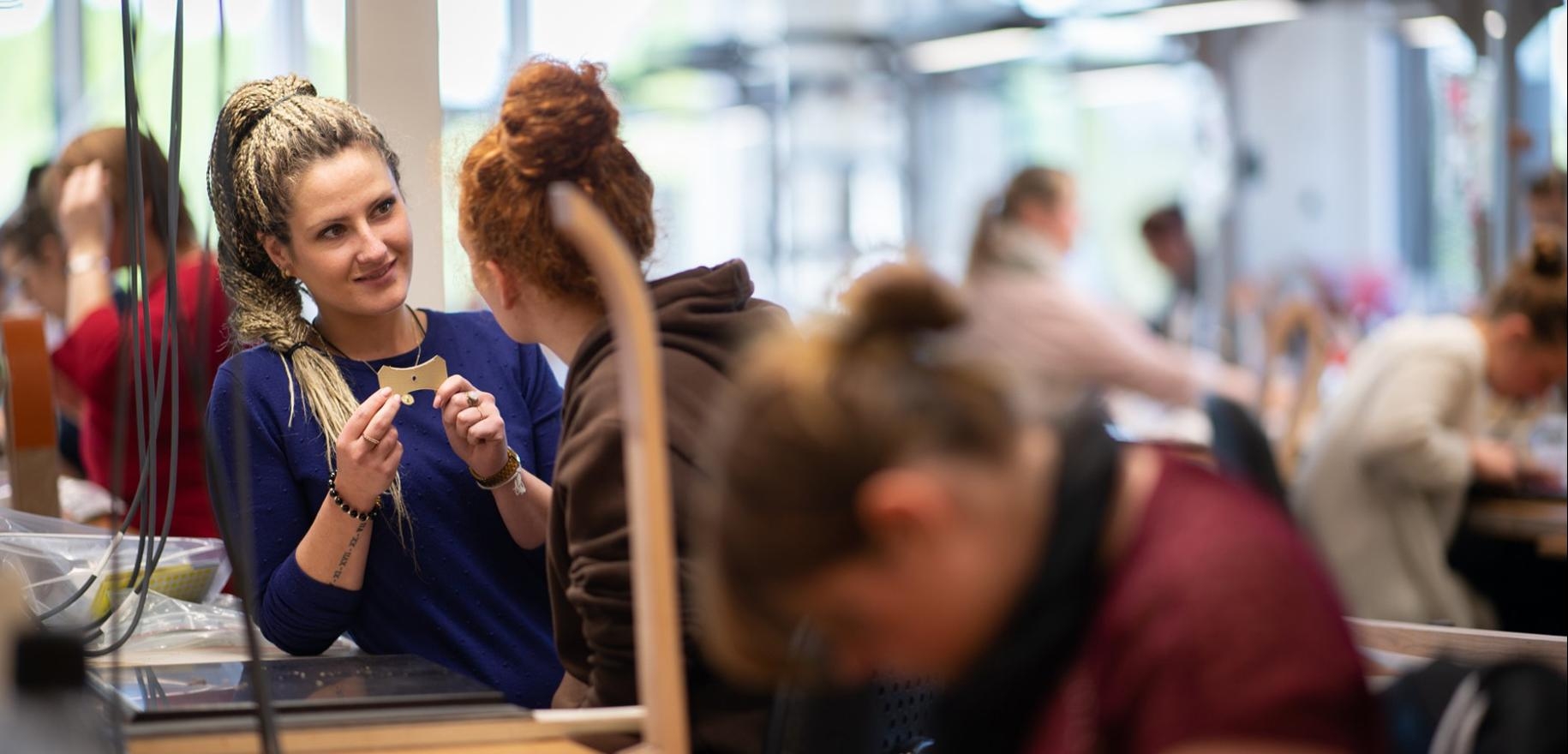
Strategy
Hermès is an independent company backed by family shareholders. Its strategy is based on three pillars: creation, craftsmanship and an exclusive, balanced distribution network.
Since 1837, the Group has remained true to its values of freedom, demanding craftsmanship savoir‑faire, authenticity and responsible growth. Its integrated craftsmanship business model places quality and sustainability at the centre.
In 2024, the House maintained its vision, preserving the major balances of the House, committed more than ever to respecting its values.
Creation at the core of Hermès' strategy

Hermès creates and manufactures quality objects designed to last, to be passed on from one generation to the next, and to be repaired. This approach requires these issues to be taken into account at every stage, from design to sales.
Hermès’ strategy is based on creative freedom. Each year, a theme inspires creators and Artistic Directors. Driven by a history spanning nearly 200 years, during which the House has continued to develop with audacity and ingenuity, Hermès paid homage to the theme of the Spirit of the Faubourg in 2024. This place, the result of a dream — that of Émile Hermès — is the beating heart of the House. It is found everywhere Hermès is located and infuses the effervescence and joyful spirit so dear to the House.
High standards in design and manufacturing encourage the creation of objects that aim to surprise and amaze customers. This creativity, revolving around traditional savoir‑faire, is coupled with innovative processes to revisit timeless models and create exceptional pieces, without departing from Hermès’ trademark humour and imaginative flair. The unbridled creativity flourishes in all métiers, as reflected in the numerous scarf designs printed every year. It is then expressed through over 50,000 references, developed around a unique identity and a style blending exceptional quality, innovation, surprise, elegance and simplicity. In 2024, it was expressed in particular with the successful launches of Barénia perfumes, a new feminine fragrance inspired by the House’s leather heritage, or Hermessence Oud Alezan. The Hermès Beauty métier completed the fifth chapter of Le Regard with the launch of Trait d'Hermès. New creations have met with great success, in the leather goods collections, alongside emblematic creations, such as the Haut à Courroies en selle, Della Cavalleria Élan and Arçon, Men's and Women's ready‑to‑wear or in jewellery, with the eighth Haute Bijouterie collection, Shapes of colour. In silk, the dynamic of formats, materials and creations continued to drive the collections.
Hermès’ mission is to create unique and original objects, allowing the time necessary for their careful creation, so that they gracefully accompany the needs and dreams of its customers. Its goal is the pursuit of excellence and uncompromising quality, in each of its métiers and services.
Performance of the integrated craftmanship model

Hermès' foundations lie in its Craftsmanship division, the second pillar of its strategy. Backed by a history shaped by six generations, Hermès moves with the times, but always respecting tradition, transmission and innovation.
The House works alongside those who master, preserve and transmit craftsmanship savoir‑faire through their knowledge of materials and their exceptional techniques. Each new leather goods workshop is an architectural project in its own right, enabling around 300 jobs to be created and promoting a pleasant working environment on a human scale.
Hermès boosts its investments every year to expand its production capacity and satisfy its 16 métiers.
The House ensures that it continually nurtures improvements in the gestures and savoir‑faire of its craftspeople. True to its commitments in terms of education and transmission, and to support the growth of its activities, Hermès opened the École Hermès des Savoir‑Faire in 2021, which has been rolled out in 10 training schools in the regions, and delivers a CAP vocational qualification in leatherwork and a vocational training certificate which has been extended to cutting and stitching. In 2022, the House also launched the École des Artisans de la vente in Paris and is rolling out its training courses mainly for sales teams in Hermès stores around the world.
To guarantee this craftsmanship model in the long term, the House’s strategy is to accelerate the securing of its supplies of materials and consolidate relations with its suppliers over time. Vertical integration, through partnerships and acquisitions, ensures traceability in its supply chains and supports the development strategy, with regards to materials as well as techniques and savoir‑faire.
In 2024, Hermès strengthened its capacity investments in all métiers and, in particular, in the Fashion and Leather Goods métier with the opening of a 23rd production site in Riom in the Puy‑de‑Dôme region, or with the extension of the Hermès Perfume and Beauty site in Normandy. Solid vertical integration remains at the heart of the strategy, with 55% of objects made in its in‑house and exclusive workshops, and 74% made in France, as in 2023.
The dynamics of an exclusive, omnichannel and multi-local distribution network
Hermès' own distribution model is based on a network of stores, most of which are operated directly, and innovative e‑commerce sales sites, making it possible to respond to rapid changes in demand and maintain a privileged relationship with customers. It enabled Hermès to post excellent results in 2024 in a more uncertain economic and geopolitical context, marked by a slowdown in demand for the luxury goods sector as a whole.
The exclusive distribution network consists primarily of branches run by the Group around the Hermès brand, which represent more than 92% of revenue. Each of the 293 stores across the world offers a personalised selection of objects, to exceed the specific expectations of customers and offer a distinct purchasing experience in each and every store. Each store is unique and enables its customers to explore and discover the most beautiful products, and extends the House’s lustre worldwide.
The performance of e‑commerce has strengthened, alongside the physical network, with the successful launch of its proprietary platform worldwide, the attraction and retention of new customers, and the development of services. This strategy supports the House’s customers and accelerates the digitisation of uses. This digital flagship is designed like any Hermès store with its spirit of fantasy, authenticity and diversity. The windows, products, services and stories are gathered in a single virtual place.
Customers are placed at the core of the omnichannel network, so as to best meet their expectations and offer them a unique experience. Around the world, Hermès stores are veritable “homes for Hermès objects”, each with its unique architecture, offering customers a unique experience, complementary to its website hermes.com. The House also hosts special occasions, revolving around events in the world, and dynamic and animated set designs. Its unique and responsible communication ensures that it stands out, while nurturing the link with its customers, by giving prominence to multi‑local expression.
Maison Hermès, present in 45 countries, has an omnichannel network that is geographically balanced, with measured development and a constant search for prime locations.

An entrepreneurial spirit and independence
The entrepreneurial spirit has been at the heart of Maison Hermès since its creation. It is illustrated by its abundant creativity, a capacity for constant innovation, new métiers, new production units and store openings.
This strategy offers store managers freedom of purchase, to meet the specific needs of their customers. Two podiums are organised every year to present the fall‑winter and spring‑summer collections. These bring together all store and country managers, managers of the different métiers, as well as designers, to present all collections to the sales teams, who are thus responsible for compiling their own collections and making their store unique, with a special mix of products. This freedom means that in each country the Group’s customers are presented with a diversified and unique mix of products resulting from this flurry of creativity, blending emblematic products and the House’s new references, chosen to best meet local expectations.
In order to continue this strategy, Hermès asserts its independence, underpinned by a strong family‑based shareholding structure, committed to retaining most of its production in France and preserving its culture.
This independence, and the House’s strict financial management, allow it to self‑finance operational investments, both in production capacities and the network, as well as cross‑functional projects, and to preserve its long‑term strategy. Over three years, Hermès increased its operational investments by €2.4 billion, of which 67% in France.

Responsible growth and value-sharing
As a company that respects the nature that inspires it, Hermès ensures the preservation of its resources and its impact on natural environments and local ecosystems, with an artisanal production model. The Group is stepping up its efforts in terms of social, societal and environmental performance.
Hermès’ highly integrated craftsmanship model promotes the creation of skilled jobs in France and social inclusion. The Group has more than doubled its workforce in 10 years and more than 60% of recruitment takes place in France. The diversity of talents is a source of wealth, creativity and innovation. In 2024, Hermès continued to recruit and grow its workforce, which increased by close to 2,300 people, including nearly 1,300 in France. The House has exceeded the threshold of 25,000 employees, who make Hermès shine around the world. Over the last three years, the increase in the workforce amounted to nearly 7,000 jobs, of which 60% in France. These women and men who guarantee the quality of the objects, constitute a heritage for the House. To affirm its commitment to education, the House is developing its training schools for its major craftsmanship métiers.
The profit‑sharing and incentive agreements, as well as the granting of free shares, enable all employees in France to share in the Group’s success. Today, employee shareholding, taking into account the latest allocations, concerns approximately 70% of employees. True to its commitment as a responsible employer, and recognising the commitment of everyone to the Group’s performance and success, Hermès paid all Group employees an exceptional bonus of €4,500 in 2024, in addition to the salary increases in France and worldwide. In 2024, the House also continued its actions to strengthen inclusion and diversity. Today, 7.12% of Hermès employees in France have a disability, exceeding legal obligations.
Through its engagement with local authorities and communities where its production sites are located, Hermès contributes to revitalising regions, and provides working conditions that offer proximity and stable employment. The Group is an economic player that is committed to its ecosystem and its stakeholders.
Thanks to the Fondation d’entreprise Hermès, the Company is expanding its philanthropic actions through artistic creation, education and transmission, solidarity and the preservation of biodiversity.

The environment at the heart of the craftsmanship model
Nature, a source of exceptional materials, is at the heart of Hermès' craftsmanship model and its preservation plays a central role in Hermès' commitments. Global warming, its impact on biodiversity and the industrialisation of raw materials are areas of concern, which the House addresses through its climate strategy, its concrete initiatives in terms of responsible supply chains and its policies for the preservation of natural resources.
The Group’s environmental policy is based on commitments in terms of the climate and the preservation of natural resources, including the protection and regeneration of biodiversity, the reduction of water withdrawal, and the management and reduction of discharges and waste.
The House is stepping up its actions to reduce its footprint on biodiversity, in particular by carrying out a complete inventory of its impacts using the Global Biodiversity Score (GBS) method in collaboration with WWF and CDC Biodiversité, as well as specific studies on certain sectors. Committed to the Science Based Targets for nature (SBTN) approach since 2023 and among the first companies to have initiated it worldwide, Hermès successfully completed the first two steps in 2024 to assess and prioritise its impacts on nature.
The House, which is naturally a low emitter of greenhouse gases, is continuing its efforts to combat climate change in accordance with the climate trajectory of less than 1.5°C. Its objectives for 2030 were validated by the Science Based Target initiative (SBTi) in 2021. The Group is strengthening its actions by controlling its industrial, logistics and commercial activities and gradually engaging its partners in the value chain. In terms of energy, the Group’s energy sobriety policy is supported by a de‑fossilisation strategy, in particular through the use of renewable energy.
Hermès places responsibility and sustainability in all its actions and creations. Each métier applies the principles of eco‑design to optimise the use of materials so as to reduce waste, promote reuse and recycling, and be part of a circular economy approach. Product life cycle analyses structure this approach and prepare the Group for the regulatory requirements of environmental labelling in France. In addition, the particularly demanding responsible real estate standards aim to reduce the greenhouse gas emissions of new constructions and the energy consumption of buildings, thus integrating sustainability over the entire life cycle of projects. Moreover, the responsible IT approach covers all of the Group’s digital products and services. It aims to use best practices to support the environmental transition of operations, limit the digital carbon footprint and support the Finance function in the consolidation of regulatory reporting.
Hermès is committed to support its suppliers in meeting requirements in terms of traceability, certification, carbon trajectory, reduction in water consumption and the use of plastics. Its supply chain briefs and a responsible purchasing policy are published on the House’s website, as well as its animal welfare policy. The House has increased the transparency of its non‑financial information, in particular through the publication of its Climate transition plan and its Forest policy.
Recognised social and environmental performance
In 2024, Hermès again saw an improvement in non‑financial ratings, reflecting the strength of its CSR commitments. Hermès was rewarded by receiving the Humpact Employment Grand Prix for the fourth time, an award that recognises social achievements, as well as the Humpact Prize for people with disabilities, received for the first time. Recognising the quality of its regulated information, Hermès received the Transparency Awards Grand Prix. Hermès is on the CDP A‑list (ranking of the best‑performing companies worldwide on environmental issues), rated A for Climate, A- for Water, and A for Forests. The assessment of the S&P ESG rating agency increased by 11 points, and the ISS agency published an improved “B‑Prime” rating.
Hermès, a family business, has been able to adapt to changes while favouring a long‑term approach. The Group, on the strength of its craftsmanship savoir‑faire, its exclusive distribution network and its creative heritage, is continuing its sustainable and responsible development.